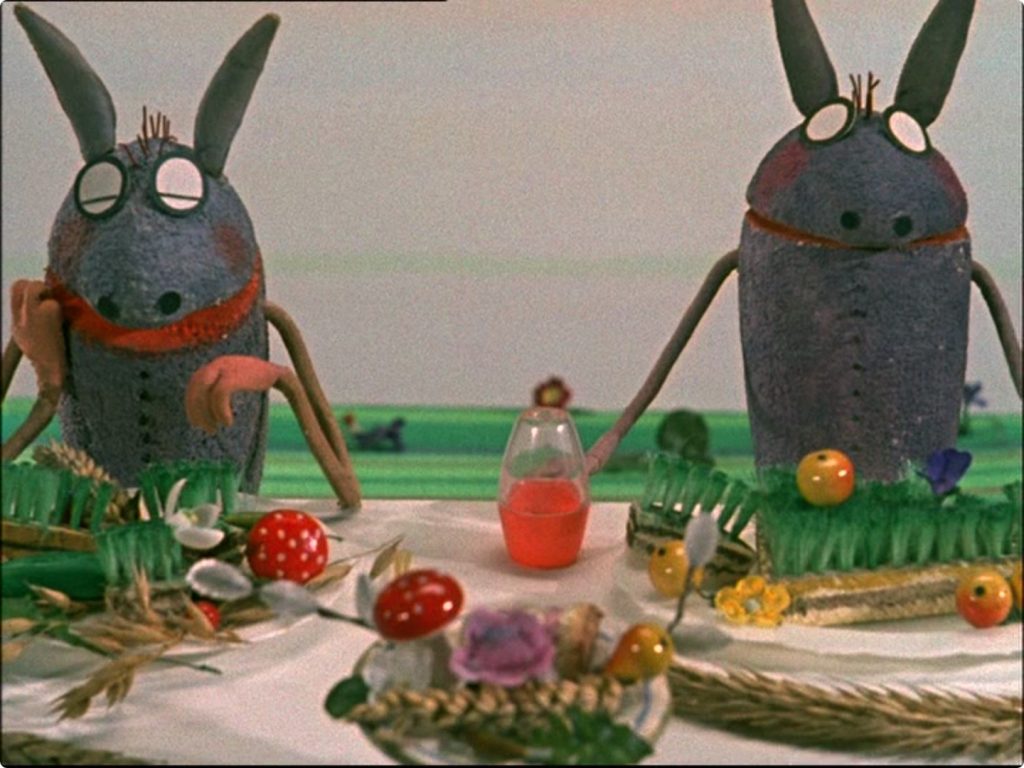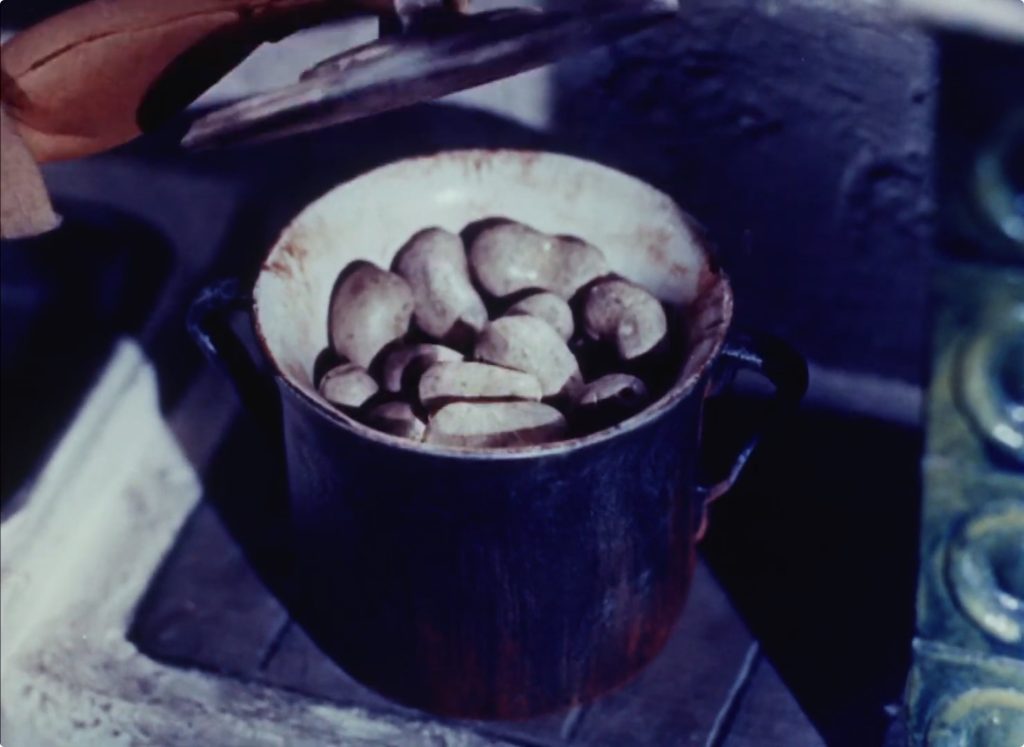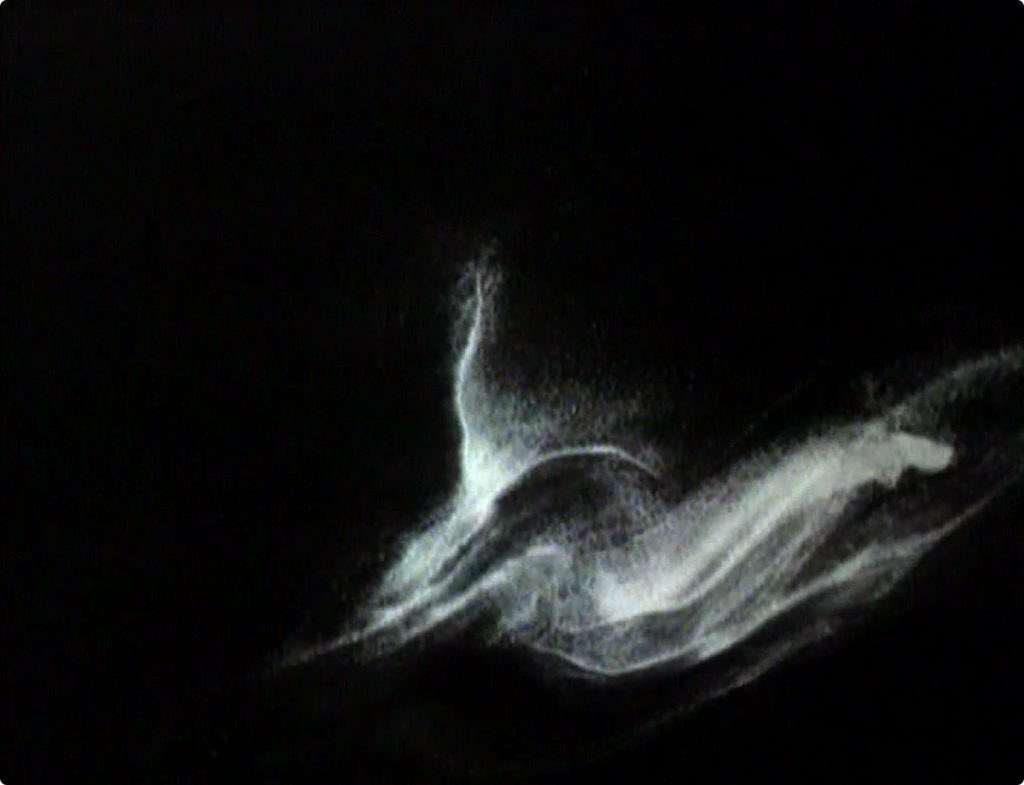One could enjoy quite a feast from the buffet of stop-motion history. You can find eggs in Charley Bowers’s Believe It or Don’t (1935), an array of fresh fruits and vegetables in Disney’s A Symposium on Popular Songs (1962), beans in Ottó Foky’s Babfilm (1975), chicken in the famous “Sledgehammer” music video (Stephen R. Johnson, 1986), and pasta (and much more) in Youlia Rainous’s Fouding or Not Fouding (2008). If the seasoning is not quite right, there is plenty in the filmography of salt-on-glass animator Aleksandra Korejwo. Thirsty? Grab some coffee from this short by Alan Poon from 2013. Food, I argue, is a promising subject for stop motion due to its familiarity(which lends it strong recognizability) and its availability. As I will discuss, the use of food vividly illustrates how stop-motion embodies divergent thinking and a freedom from functional fixedness. This creative flexibility makes it a superb case study for mapping out the varying relationships between depicted and represented elements in stop motion.

First, and most simply, profilmic food can represent that same food. This gets tricky because stop motion often uses miniaturized objects, and full-sized, real food creates scalar discrepancies in a typical scenario. However, such discrepancies constitute an aesthetic strategy in their own right. One example is the bit from A Town Called Panic (2009) where Cheval finds himself neck-deep in popcorn, each kernel of which appears enormous in relation to the character (see Figure 1). Food can also be used in non-narrative contexts, e.g., when they are exploited for their geometrical properties as part of a semi-abstract array. The Disney and Rainous examples above demonstrate this tendency. Animators have also applied the strata-cut cross-sectioning method to foods in order to reveal the abstract visual patterns, and latent movement possibilities, within them.
Then we have cases in which foods are “playing themselves” but are anthropomorphized. For instance, in Incidente (K. Perenoski, 1979), eggs that can waddle upright fearfully make their way through a processing plant, while in Meat Love (Jan Švankmajer, 1989), a pair of raw steaks flirt and enjoy congress before meeting their tragicomic end in a frying pan (It makes one think, among other things, of one’s own fragile “meat suit”). In an episode of Robot Chicken, two potato CHIPs pull over a motorist. Singing onions bring an audience to tears in At the Opera (Juan Pablo Zaramella, 2010). It is with examples like these last two—which involve visual puns and/or found resemblances between objects and the referents they are substituted for—that we find perhaps the most complex uses of food in stop motion.
Food can creatively substitute for another object—and vice-versa. These need not involve anthropomorphization. Baguette slices serve as stairs in Twins in Bakery (Mari Miyazawa, 2014), a beer-bottle cap becomes a discus in this Budweiser ad (Osbert Parker, 1992), and an assortment of produce comprises parts of a vehicle—complete with cauliflower exhaust—in this spot for Blackmores (Jonathan Chong, 2018). Examples of objects-as-food include sequins as liquid, doilies as deli meats, brushes as salads (see Figure 2), and pebbles as potatoes (see Figure 3). Viral YouTuber PES has made a career with this strategy. Like the famous composite heads of Giuseppe Arcimboldo (themselves a direct influence on Švankmajer, the Quay Brothers, and others), these are “displays of wit,” in accordance with a notion of “wit” as “the faculty that seeks out and finds the relation between things”[1]. This faculty for resemblance-based substitution is also at the root of children’s earliest forms of make-believe. The wit, ingenuity, imagination, and creativity associated with finding and/or forging resemblances between things lies at the core of stop motion.
Stop-motion animators can also use food that may not be immediately recognizable as food but that can become recognizable via paratextual cueing. Le Cygne (1990) by Korejwo is a good example. Her method may be mysterious to a naive viewer, but once one is aware that one is watching salt move around, one can view the images in a new way by seeing the forms onscreen as salt (see Figure 4). The granules resolve as granules rather than as (real or simulated) brushstrokes or some other material. Their movement takes on new qualities once it can be indexed as salt being pushed around. This knowledge makes possible a kind of “rabbit/duck” switching effect, whereby one can see, non-simultaneously, both the flat surface upon which the salt moves and the illusion of fully dimensional diegetic space that the salt-images construct. Many behind-the-scenes paratexts tutor the viewer in how to appreciate what they see, as in this promo for Coraline (2009) that shows the use of popcorn as a substitute for cherry blossoms. The trees are never the main subject of a shot in the finished film, so the popcorn trick could easily be overlooked. It is outside my purview here, but note that food can also be constructed from a single, recognizable material, like clay or wool.
Stop motion’s object substitutions, and in particular those involving recognizable, closely photographed objects like food, evoke a sense of play and hapticity. They also have the potential to pull the viewer’s attention toward multiple spaces—the diegetic and the profilmic. And, in recontextualizing and defamiliarizing food, they often transgress some of our most firmly entrenched categorical boundaries. In so doing, they can give us—potentially all at once—a taste of unease, disgust, horror, fascination, and wonder.
Andrea Comiskey is a fellow of the American Council of Learned Societies and a Visiting Scholar at the University of Pittsburgh. She is at work on a multimodal monograph on the poetics of stop-motion animation, exploring the form’s key affordances, its distinctive modes of depiction and representation, and the role of technological change in its craft practices and reception.
[1] Thomas DaCosta Kaufmann, Arcimboldo: Visual Jokes, Natural History, and Still-life Painting (University of Chicago Press, 2009), 91–92.




1 comment for “A Smorgasbord of Substitutions: Food in/as Stop-Motion Animation”